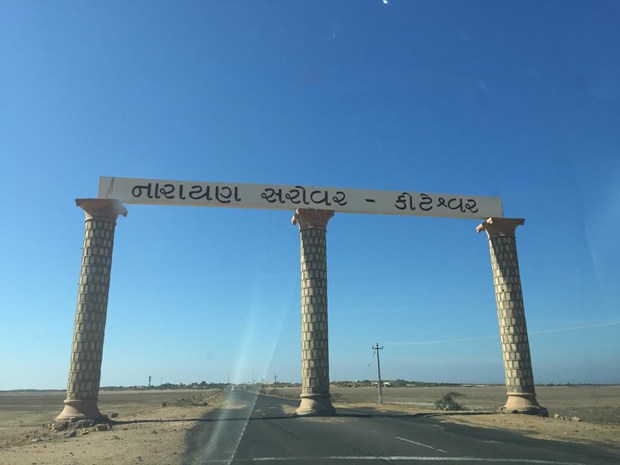Wednesday, November 18, 2015
Thursday, September 17, 2015
Monday, September 14, 2015
Migrant Crisis
Migrant Crisis
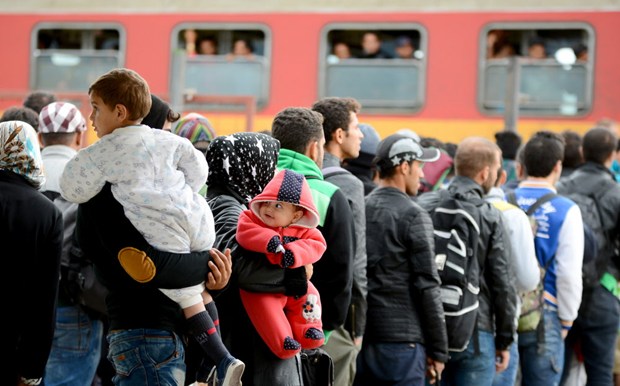
Millions of desperate people are trying to enter Europe. They can be termed Refugees or Migrant, depending upon from what country they came from. About 50% of them are reported to be from Syria,and rest from Irag,Afghanistan,Iran and Pakistan. They are Sunnis, Shia, Christians,Kurds and Yezdis. They may be farmers, business people,women,men, children and sick elders who are trying to flee the ravaged Middle East. This is due to rise of identity politics,in the Middle East, Sub Sahara Africa and parts of Afghanistan and Pakistan.The wave of violence and killings in the Middle East reminds us of the violence that broke apart the Balkans and the Ottoman Empire and also to some extent the Partition era of the Indian Sub –continent . This migration wave may last longer as the war continues in Middle East, Sub-Sahara Region and unabated sectarian and ethnic violence in parts of Pakistan. There is now confusion in the Arab world, confusion between Sunnis and Shias, Iran and Saudia, authoritarianism and democracy, liberal nationalism and fanaticism and name what one may like. Does this mean that Arab world has gone nowhere despite money, oil and Sheiks or this is a malice which is going to engulf a major part of the world in years to come. There are about 8,50,000 refugees on the doors of Europe, ranging from Budapest to Berlin. The green signal from Germany has started the wave and hence there is deluge for Mama Merkel’s land. Would Europe be able to absorb them seamlessly or the migrants would create their own islands. The latter is more probable as seen in parts of Europe like Birmingham, Marseilles and Belgium. Europe or EU is itself in the throes of poverty with continuing budgetary and welfare crisis, youth unemployment and resulting frustration. Countries like Germany and Sweden may cope with migrants assuming that many of the migrants are well qualified and tech.savvy and may resolve the perennial skilled and non skilled problems of North and West Europe but the same solution may not work in countries like Greece or the older Eastern Europe countries like Hungary, Austria and Poland. The assumed success in Germany and Sweden can lead to more migration if Turkish war against Kurds escalates or the present military dictatorship fails in Egypt and radical Islamist take over forcing 9% to 10% Coptic Christians to leave their land forever. The same philosophy can work in Lebanon or parts of Africa which share borders somewhere with Europe. All these new arrivals to Europe would also give rise to security problems, backlash from extreme right groups and parties . All migrants many not be innocent or naïve. There are already fears that ISIS may have sponsored some of them or could have influenced them.Director of National Intelligence(USA) James R Clapper has already warned(Sept.11,2015) about this. ISIS operatives have been claiming that thousands of fighters would be smuggled into Europe and USA. While the USA has pretty aggressive screening system for asylum seekers, the same cannot be said about Europe.USA has decided to accept 10,000 Syrian refugees. There may be similar security problems if after few years these migrants are not able to adjust themselves economically, culturally or social. They are not going to return to their native land but their existence in frustration could intimidate the locals. Capitalism the major social engine around which Europe galvanized itself has failed to keep up the pace. Liberal values like free expression individual self determination, human rights and all such hi-fi words around which Europe enlightened itself may soon find a clash with these Migrants who come from a different mind set. Many of them have fundamentalist approach, do not believe in certain freedoms which West enshrines and may not like concept of open society which they did not find in their land of origin . Fundamental Islam has not brought any hope of goodness so far,otherwise these people would not have abandoned their farmlands, businesses and their hearth for succor in Christian lands. There is crisis in both Middle East and Europe and neither has any manna for success. EU has not been able to do any thing for ME or Africa despite relatively generous aid and on the other hand Middle East has squandered opportunities which Oil gave them in abundance. The Migrants will take few years to make a loss and gain statement on their leaving Middle East.?
Friday, March 6, 2015
Narayan Sarovar the last Temple on the Indo-Pak border
A Historical Temple On The Borders Of India-Pakistan.
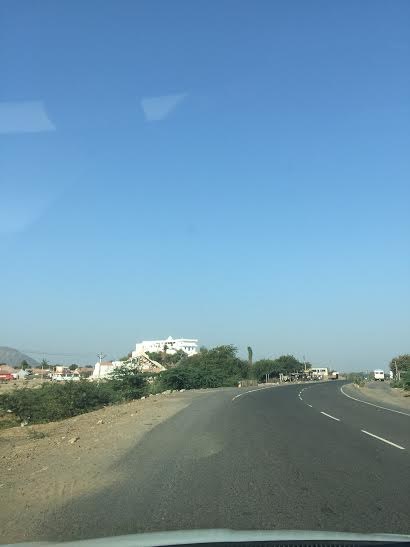
Koteshwar is 166 kms from Bhuj, the District Hqrs of Kutch District of Gujarat. Koteshwar is located on the last piece of land on the Kori Creek(Kutch Creek) which separates India from Pakistan in the Arabian Sea.It has an excellent road with couple of small towns coming on the way, like Mata no Madh.
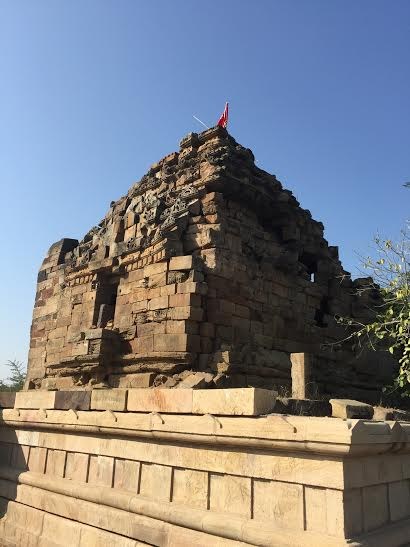
This is Purneshwar Temple which is around 30 Kms from Bhuj. It is an old Shiv Temple built around 9th century but not much is known about it. It was twice destroyed by the Earth Quakes of 1819 and 2011. It is a neglected site and that appears to be astonishing that an art as ancient as 9th century is gathering dust. Long time back in 1980s when I called on the Chief Priest here, he requested for electricity in the Temple. Though electricity was provided by the Govt., the site also needs to be upgraded and restored.
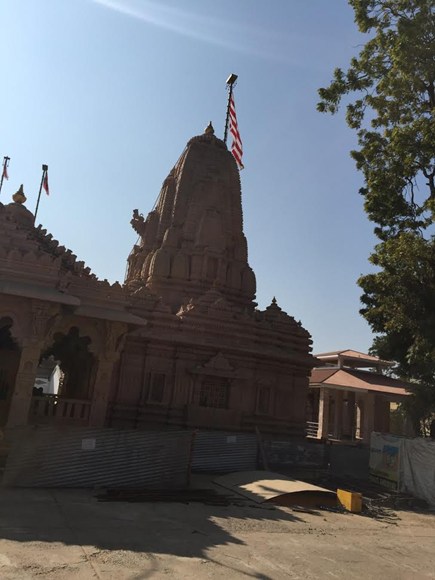
Mata no Madh is name of the place, where the famous temple of Ashapura Maa, the head deity of Kutch Rajputs and family diety of Jadeja rulers stands. It is located about 80 km from Bhuj.
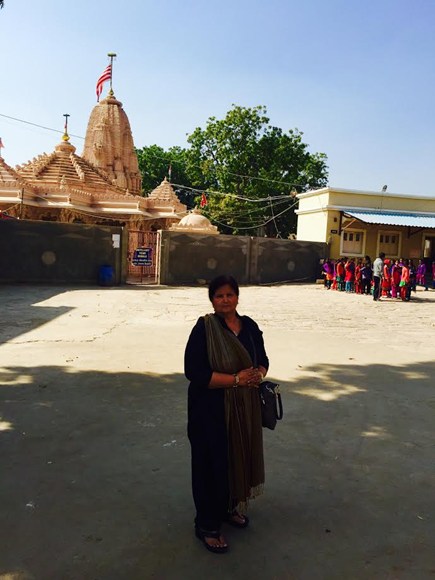
The temple was built in the 14th century by Ajo and Anagor,two Karad Banias. They were the ministers in the court of the father of Lakho Fulani. The Earth Quake of 1891 damaged the temple. Within 5 years Sundarji Shivji and Vallabhaji, two BrahamKshatriyas repaired it. It was rebuilt by the local artisans, mainly Mistries(masons)of Kutch who were well known then and even now,but most of them have migrated to other countries in search of jobs.This ancient temple is now 58 ft. long, 32 ft. wide and 52 ft. tall. Once again the earthquake of 2001 AD shook it and its dome tumbled down. However, very soon it was repaired and now it stands with a new grandeur.
There are two temples, the original old temple above the hill, which lies abandoned as after the earthquake of 1819, a new temple below the hill was built, which now houses the deity and is in use ever since. The picture above shows my wife standing in front of the temple gate. The Temple is looked after by the Head Priest from the Kapdi community and is known as Raja Bava.There are many other priests also who are working on the various positions in the temple. The Temple serves free food every day. There is huge Mela (Fair) held around Vijayadashmi and during this Navratri period many people go on foot from Bhuj to visit this temple on the auspices dates. People from the erstwhile Royal family also visit this temple to perform the Maha Puja around last day of the Navratri.
This the beginning of the 2km drive to Narayan Sarovar and Koteshwar.
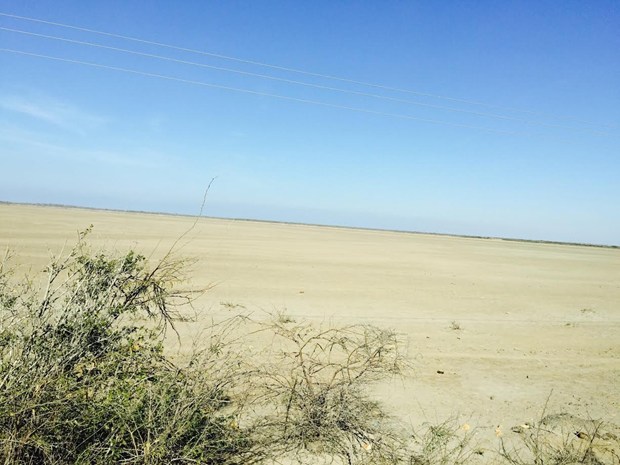
Till we reach the above Arches, the land is barren, sandy but has lot of potential for gypsum,china clay,lignite and other minerals.The land is rocky, uncultivated with sparse bushes of babool and other desert acacia plants. A few Kilometers from here is the plant of the Sanghi Cements which is almost on the borders of Indo-Pakistan in Kutch. Kutch has reserves of lignite, bentonite and other sodium based minerals.
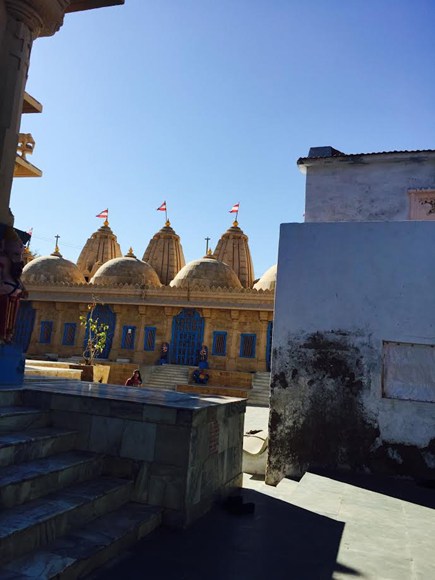
Narayan Sarovar is one of the most sacred pilgrimage sites for Hindus. It is one of the five holy ponds in India mentioned in ShrimadBhagwat Geeta.Narayan Sarovar means the Lake of Narayan, a name for Vishnu.As per legends, one of the holy rivers of India, Saraswati River had an out let in to sea near the present day Narayan Sarovar and waters of lake were filled with holy waters of River Saraswati, that is why this place was and is still considered as one of the five holy lakes by Hindus.Legends say that there was also a lake built by Alexander the Great which disappeared during the earthquake in 1819.
In this place there are Vaishnav temples of Shri Trikamraiji, Laxminarayanji, Govardhannathji, Dwarkanath, Adinarayan, Ranchodraiji and Goddess Lakshmi.The Queen of King Rao Deshalji II(Jadeja Dynasty) of Kutch had built these temples. Devotee from all over India come to worship the lords here. The architecture is ancient and awe-inspiring.The temples of Lakshminarayan and Trikamray are built in same style as Dwarka temple. The other five temples were built around the same period 1780-1790.
According to Hindu theology, there are five sacred lakes collectively called Panch-Sarovar (Five Lakes),namely Mansarovar(Himalayas, UP Hills), Bindu Sarovar(Orissa) Narayan Sarovar Pampa Sarovar(Karnataka) and Pushkar(Rajasthan). A fair is held here on the 11th to 15th day of month of Kartik of the Hindu calendar (November/December).
Mahaprabhu Vallabhacharya during his lifetime is said to have visited Narayan Sarovar and spent some time here and as such the site is sacred also for followers of Pustimarg (Vaishnavas)
Here, you can also see red antelopes or chinkaras and in year 1981 the area around was notified and named after Narayan Sarovar as Naryanasarovar Sanctuary.
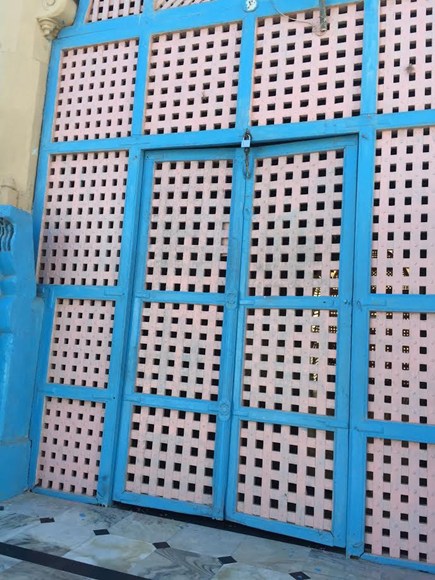
This picture is of the Office and storage room as well working rooms of the Narayan Sarovar Trust .These are old buildings but have been restored to some of the old constructions. When we visited the Sarovar in Dec.2014, the lake was partially dry and the residual water was turgid. The Temple trust and the Govt. of Gujarat need to attend to the dryness of the lake by finding out some way to keep the lake perennial filled with clean water. People come from distant areas and beyond to pay a visit to this holy place and when they find the lake to be dry, they are unhappy and upset. The practice of the Hindu trust to keep the portals of the Temple closed during the afternoons here and in almost all other temple cities can be set right by keeping an additional staff to attend to the temple during the afternoons. Most of the people have no time to wait and this perhaps causes a loss to the spread of the religion.When questioned in this regard, the caretakers say that the Gods are taking rest. Silly notion. Can the Almighty ever sleep. If he sleeps what will happen of the world.
There is also a temple of Adinarayan in the village of Narayan Sarovar near the lake.
Seven stone temples are in a covered courtyard approached from the lake by flights of stone-steps and bordered by a strong wall. The wife of Rao Desalji (1718-1741), Vagheli Mahakunvar built the temples of Lakshminarayan, Trikamray, Adinarayan, Govardhannath, Dwarkanath and Lakshmiji in 1734. The temple of Trikamray is in the same style and shape like that of Koteshwar. It is 72 feet long, 68 1\2 feet wide and 61 feet high and it has three side covered buildings with a large one in the centre, all capped with domes resting on twelve feet high pillars.
The stone and wood frames at the entrance are luxuriously stamped. The doors are plated with silver in which flowers, fruits, leaves and creepers are with inscripted. The shelter of the God stands on a base and is supported on four silver pillars with fine spiral flutes. There are three Guphas(Caves) besides these temples: Ram Gupha, Lakshaman Gupha and Shesh Gupha
This picture is of the Office and storage room as well working rooms of the Narayan Sarovar Trust .These are old buildings but have been restored to some of the old constructions. When we visited the Sarovar in Dec.2014, the lake was partially dry and the residual water was turgid. The Temple trust and the Govt. of Gujarat need to attend to the dryness of the lake by finding out some way to keep the lake perennial filled with clean water. People come from distant areas and beyond to pay a visit to this holy place and when they find the lake to be dry, they are unhappy and upset. The practice of the Hindu trust to keep the portals of the Temple closed during the afternoons here and in almost all other temple cities can be set right by keeping an additional staff to attend to the temple during the afternoons. Most of the people have no time to wait and this perhaps causes a loss to the spread of the religion.When questioned in this regard, the caretakers say that the Gods are taking rest. Silly notion. Can the Almighty ever sleep. If he sleeps what will happen of the world.
There is also a temple of Adinarayan in the village of Narayan Sarovar near the lake.
Seven stone temples are in a covered courtyard approached from the lake by flights of stone-steps and bordered by a strong wall. The wife of Rao Desalji (1718-1741), Vagheli Mahakunvar built the temples of Lakshminarayan, Trikamray, Adinarayan, Govardhannath, Dwarkanath and Lakshmiji in 1734. The temple of Trikamray is in the same style and shape like that of Koteshwar. It is 72 feet long, 68 1\2 feet wide and 61 feet high and it has three side covered buildings with a large one in the centre, all capped with domes resting on twelve feet high pillars.
The stone and wood frames at the entrance are luxuriously stamped. The doors are plated with silver in which flowers, fruits, leaves and creepers are with inscripted. The shelter of the God stands on a base and is supported on four silver pillars with fine spiral flutes. There are three Guphas(Caves) besides these temples: Ram Gupha, Lakshaman Gupha and Shesh Gupha
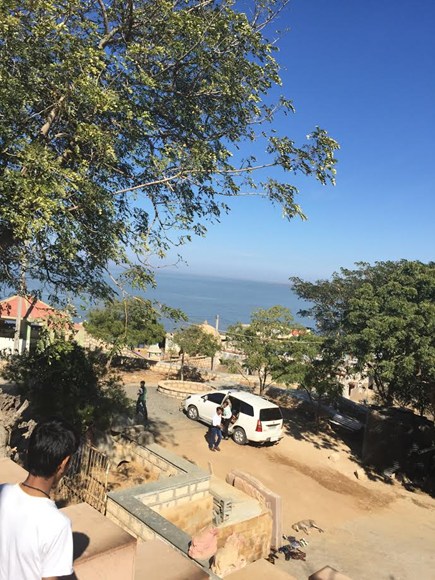

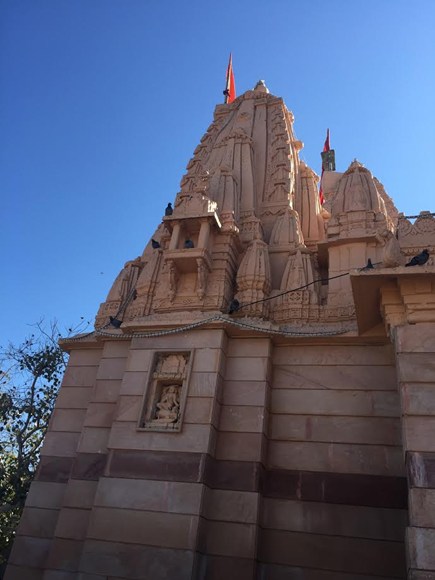
Koteshwar is situated in the Kori Creek of the Arabian Sea on the western end of Kutch just opposite to Karachi-Pakistan, and 2 kms from Narayan Sarovar.As stated in a legend, when Lord Shiva was delighted with the worship and sacrifice of Lanka King Ravan, he gave him a Ling-full of religious power. Lest Ravan's ambition become endless as a result of this advantage, all the Gods united together and conspired to gain the Ling from Ravan through dishonesty and got it installed here and thereafter known as Kotilengeshwar. According to Hieu-en-Tsiang, a Chinese traveler of 7th century Koteshwar port extended five miles in boundary near the mouth of the river Indus, which used to follow along the coast of Kutch till the great earth quake referred above.He adds that there were 80 monasteries with about 5000 monks in them during the good days. 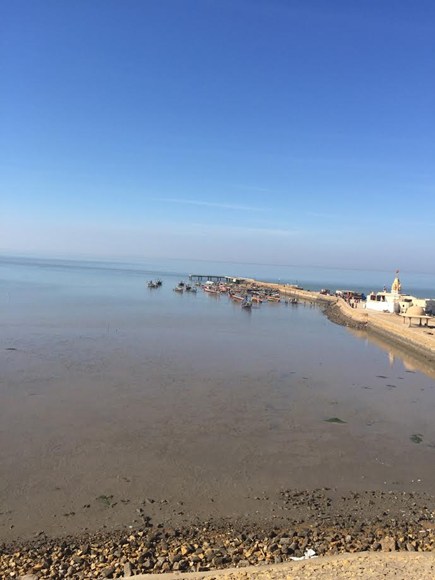

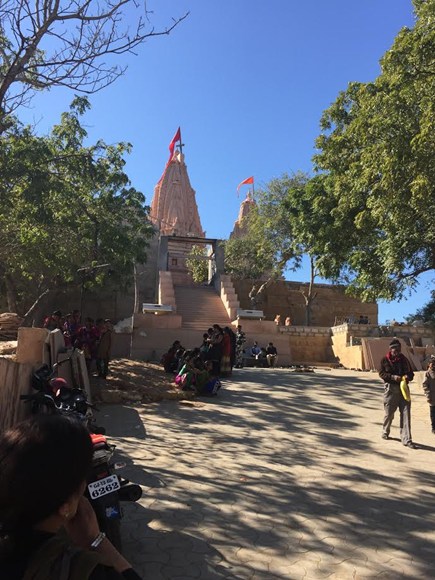
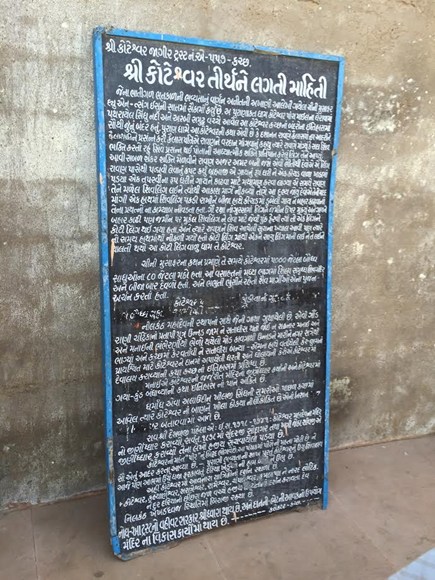
The above board (in Gujarati language) says that the temple is part of the Government Trust and the donations-income obtained from it is used for the development of the Temple.It also says the Huen Tsang a chinese traveler of 7th century said that the ancient temple was in the midst of the sea and there were 12 other smaller temples, which were the abode of Shaivites Sadhus who performed their puja's here. The writing also speak about the killing of Unnad son of Gond Queen Chandrika who was associated with the installation of the Neelkanth Mahadev temple. He was killed by the local kings and administrators through conspiracy and cheating. The writing also says that the Mahant of the Temple enjoyed the status of "Pirs" and Pirs in this area were well respected.. The attempts of Allahaudin Khilji to destroy this temple is also visible here and there is a spot where he tried to strike at the door of the Koteshwar Temple.
The writings on the left side of the gate also shows that the present fort and temple were re- constructed in 1820 by Sheth Sundarji and Jetha Shivji a Brahmakshatriya. The Temple's terrace has three domes. Under the central dome, there is a large and beautiful carving presented by Rao Desalji, the Jadeja Dynasty ruler. In the right dome, there is a large stone image of Hanuman and in the left dome; there is a large stone image of Ganpati. Inside the porch, there is a hall Mandap with a large central and two side domes. At the internal end of the hall, there are holy niches along with figures of Ganpati and Hanuman. In the screen wall of the holy place, there are two inscriptions referring to the redecoration of the temples in 1820.
A small temple is built close to the main Koteshwar holy place by the same Braham Kshatriyas and at about the same time in honour and memory of Kalyaneshwar. A tetragon pool filled by every high tide is located just near the small temple where the Hindus bathe and complete their Shraddha ceremony.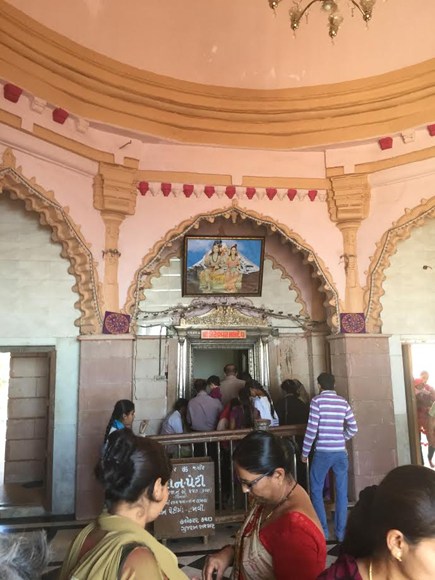

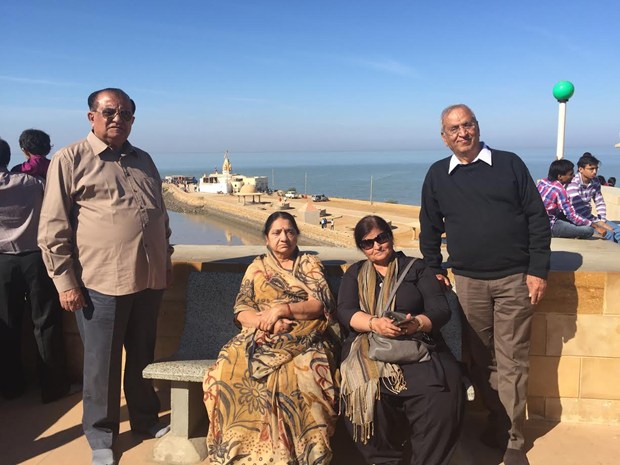
It is unfortunate that in spite of large number of visitors, the complex does not have many resources in the form of Hotels, restaurants and other information display centers. The inner road leading to Narayan Sarovar complex is a dirt path with no parking amenities. The Board in Gujarati displayed above has not been updated and no effort has been made to rectify the scratches and smudges made by some miscreants. This is one of the most important holy places of the Hindus and deserves better treatment. It is a historical place with history dating back to the Ramayan Era and yet it is neglected.
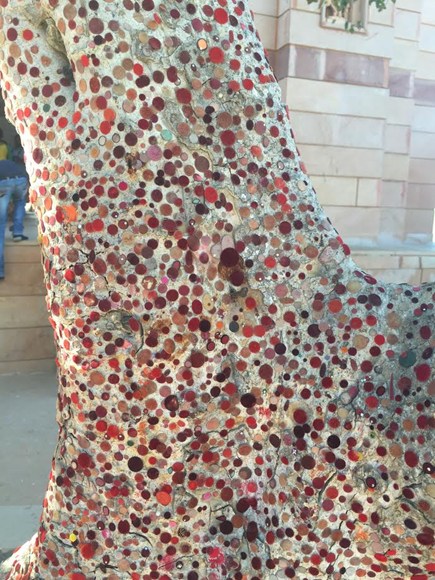
In Haridwar (Uttarakhand) there is a holy tree where people who have mansha(Wish) tie a holy thread before and after their wish is fulfilled. Here the wish is asked and fulfilled through the "Bindi".The Bindi Tree at Koteshwar.
Labels:
Koteshwar,
Kutch,
Mata no Madh,
Narayan Sarovar
Location:
United States
Tuesday, February 10, 2015
A Plebian visits a Palace
Below is the picture of Hamir Sar ( Sar=Sarovar) Lake in the city of Bhuj (Kutch) Gujarat.Kutch District is much greener today than many years ago. Due to paucity of rail link, it was a forgotten place for many years after Independence. Kutch was one of the princely state which agreed to merge with the Indian Union in 1948.Till then it was ruled by a Jadeja Dynasty (Rajputs) from the mid 16th century . Rao Khengarji (1548-1585) the founder of Jadeja Dynasty in Kutch built this lake during his period and some folk tale says that it is named after a person named Hamir who first dug this lake. History says that it was named after the son of Khengarji. Spread across 28 acres, the lake is fed by tunnels and canals connecting to the nearby three rivers. This huge lake has a small island in the middle called Rajendra Park which has a small park -cum-garden. A traditional ceremony takes place when the lake overflows its embankments. At this Puja the President of the Bhuj Municipality distributed "ladoos" called Megh Ladoos" to the the citizens of the town. Overflow is a ceremony of joy and revelry as the people of the town feel that they would have water in the lake for the major part of the year. The Lake when full looks enchanting.Since Independence the lake has overflowed only 18 times, the last being 2010.
To the East of this lake is the famous Palace of the erstwhile Maharao of Kutch Maharao Madansinhji (born as Meghraj ji)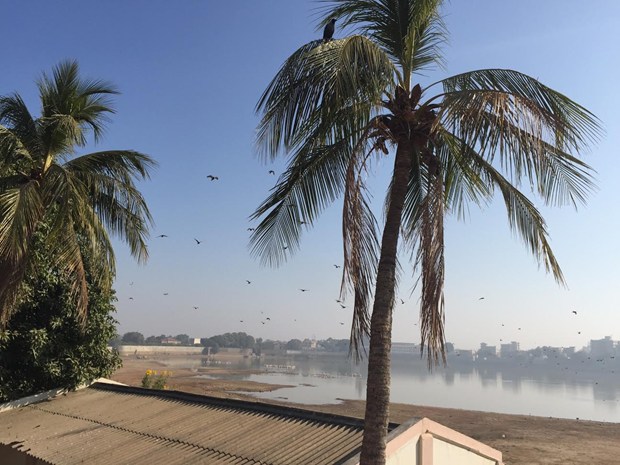
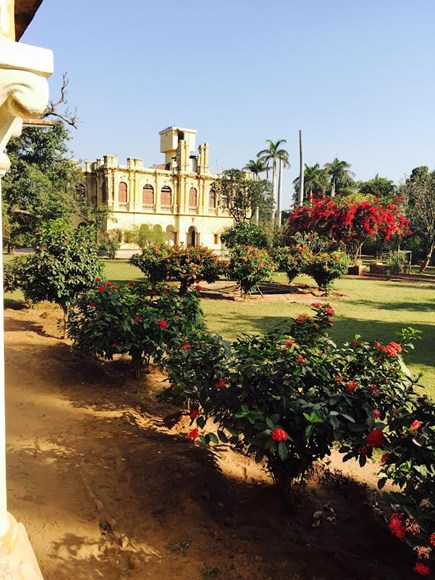
The Palace is called the Sharad Bagh Palace and the property covers about 20 acres. It was built in 1867 in the Italian style and was the abode of the Maharao Madansinji. Maharao Madansinhji (1909-1991) was the last King of Kutch state. He was the person who signed the instrument of Accession to the Indian Dominion in 1947, as his Father was in UK when the Independence took place. He was the official ruler from 26 Jan 1948 to May 4, 1948. Madansinhji ( with whom I had the honor of meeting a couple of times) died in London in June 1991 after which the Palace was turned into a Trust and is open to visitors on the selected days and timing. Generally Madansinh lived here during the winters.
The Maharao was a distinguished personality and after resigning as the ruler joined the Indian Foreign Service. He was Counselor at Indian Embassy,London (1953-1956) Ambassador to Norway(1957-60) and to Chile(1960-61). He was also a good Tennis Player having participated in the Davis Cup and also an ace Shikari.
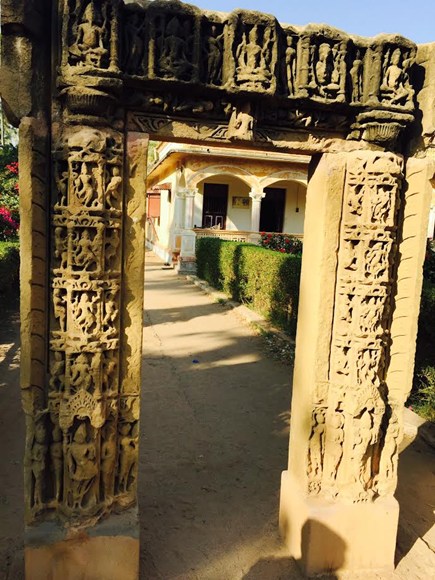
This is the entry to the Office of the Palace as well as the sitting and dinning rooms of the Palace where the Maharao used to entertain his guests. The Palace suffered major damages during the Earth Quake in Kutch in Jan.2001.
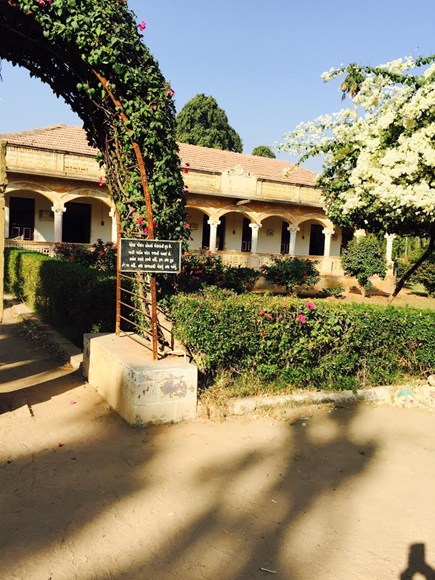
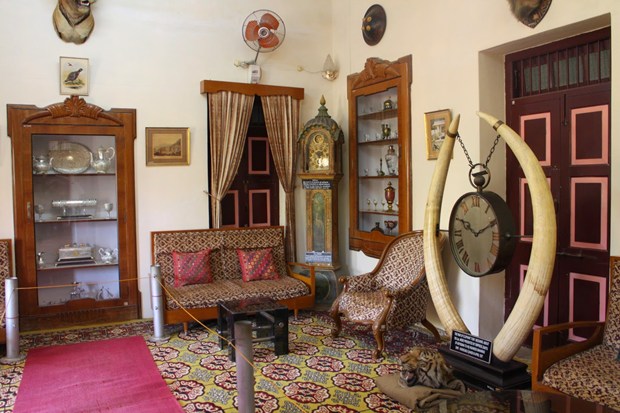
The sitting Room of the Palace displays many artifacts of the Maharao, the trophies and Mementos including a trophy from the Wimbledon Tennis Club. The grand tusker displayed is of the elephant hunted by the Maharao in Ethiopia.

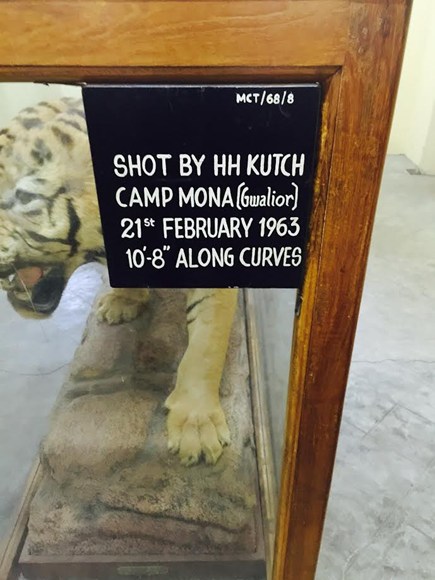
Maharao Madansinji was an ace Shikari and here is some specimen of his shikars. The Tiger he shot near Mohna (not Mona as spelt in the picture) on the Gwalior -Shivpuri-Indore AB Road was a huge animal.
The Palace has some beautiful ornamental plants and flowers besides some medicinal plants. The Palace also houses a nursery which was popular once but does not raise and tender more now due to lack of funds with the Trust. The Palace was also a location for shooting of a Bollywood movie "Int Ka Jawaab Pathaar" produced and directed by Pacchhi (brother of Actor Om Prakash)
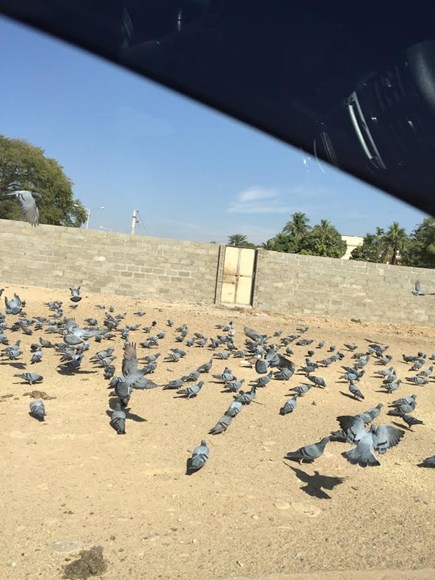
An everyday scene just across the Gate of the Palace. Like the Pigeon"s people come,live for some years and go way.
Post a Comment
Labels:
Bhuj,
Kutch,
Sharadbagh
Location:
Bhuj, Gujarat, India
Subscribe to:
Posts (Atom)
